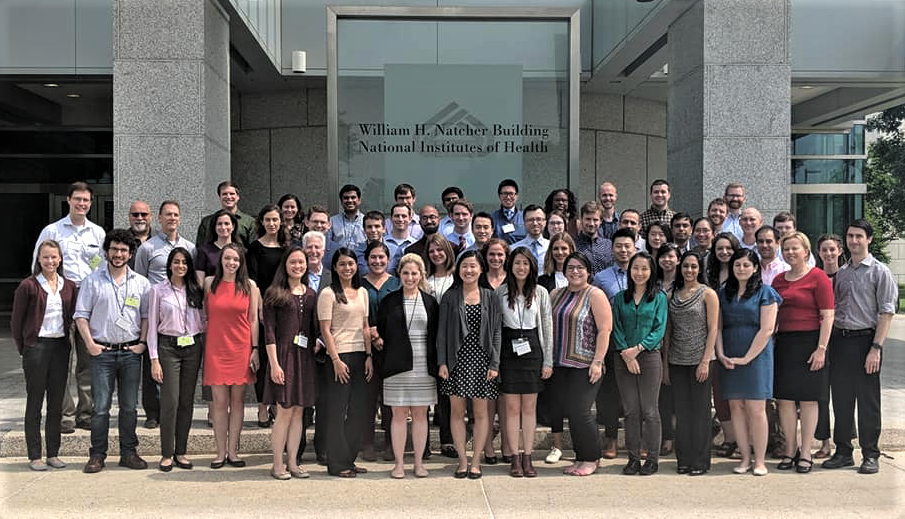2018 Combining Clinical and Research Careers in Neuroscience Symposium at NIH
The annual Combining Clinical and Research Careers (CCRC) in Neuroscience Symposium was held June 8-9 at the NIH in Bethesda, Maryland. Sponsored by the Association of University Professors of Neurology (AUPN) and NINDS, this event supports 50 MD/PhD and MD students from across the country with significant research experience and interest in a pursuing a career as a clinician-scientist in neuroscience. This year’s symposium was attended by Vanderbilt MSTP students Laura Armstrong (rising M4) and Shawn Barton (rising G4).
The event was opened by symposium organizer Dr. Allan Levey (MD, PhD) from Emory University and followed by a tour of clinical research facilities including the future site of an 11Mhz MRI, one of only three in the world. Panel discussions were held with junior and senior faculty, including Dr. Kevin Ess (MD, PhD), Director of Vanderbilt’s Division of Pediatric Neurology. They provided insight into what it truly means to be a physician-scientist to faculty at different stages of their career and how they balance clinic, research, and their other responsibilities. Dr. Kareem A. Zaghloul (MD, PhD), a neurosurgeon at NINDS, gave the keynote address. He discussed his career path and how he’s able to balance his clinical and research interests by using the resources uniquely available to him, including characterization of memory encoding in humans using intraoperative recordings, something that had only previously been done in animal models.
The final day involved presentations on some of the most recent neuroscientific breakthroughs from basic and clinical-based clinician-scientists. CCRC concluded with a discussion emphasizing the importance of having protected research time during residency. This included what to look for in a residency program when applying and also funding opportunities to pursue during residency and fellowship to support research time.
CCRC provided attendees with an opportunity to meet faculty members who have successfully combined clinical and research careers in neuroscience. They all offered a unique perspective and how their career paths took many turns along the way, but they eventually made it to running their own labs and seeing patients while doing the research they love. As attendees, we all had similar career goals and were able to network with trainees who will later become our colleagues. Over two days, we formed relationships that will last through our entire professional careers. We’d like to thank AUPN and the organizers of CCRC for the opportunity to attend and encourage anyone interested in a career as a clinician-scientist in neuroscience to apply for future symposiums!
